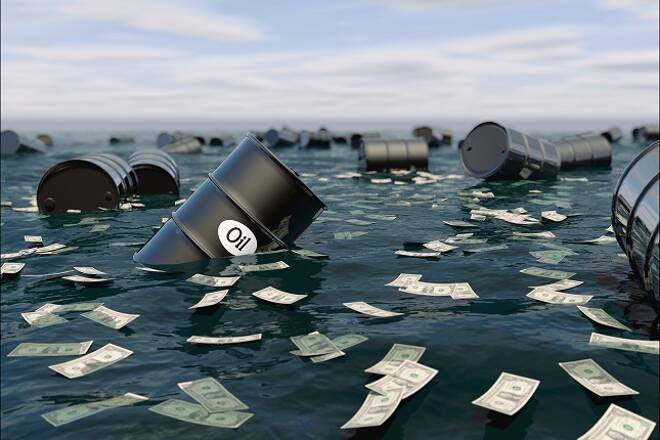Advertisement
Advertisement
OPEC Production Increase Will Not Be Enough to Avoid Shortfall
By:
According to reports, the allied partners led by Saudi Arabia and Russia will aim to increase production to about 1 million barrels per day (bpd). However, reports went on to say that this figure represents about two-thirds of Saudi Arabia’s initial request.
August West Texas Intermediate and September Brent crude oil futures contracts spiked to the upside after OPEC agreed to a modest increase in production to cover output losses from Venezuela and Iraq at a time when rising global demand put the market dangerously close to a short-fall.
The deal was reached fairly quickly on Friday after some news services speculated that negotiations could continue into Saturday. The quick decision came about after Saudi Arabia persuaded arch-rival Iran to cooperate in efforts to reduce the crude oil and avoid a supply shortage.
According to reports, the allied partners led by Saudi Arabia and Russia will aim to increase production to about 1 million barrels per day (bpd). However, reports went on to say that this figure represents about two-thirds of Saudi Arabia’s initial request.
Traders are saying the cartel settled on the 1 million barrel figure because some OPEC members would be unable to sufficiently ramp up crude production. Therefore, the increase in output may actually turnout to be between 600,000 to 800,000 bpd.
The rally on Friday is being fueled by short-covering, position-squaring and some speculative buying because some traders had been pricing in a little more than a 1 million barrel increase. Furthermore, OPEC is not expected to actually release a hard target, but many traders expect the real figure to remain well-below the 1.8 million barrels already being removed from the market.
Additionally, Saudi Energy Minister Khalid al-Falih said Friday, the world could face a supply deficit of 1.8 million bpd in the second half of 2018 and that it was OPEC’s responsibility to alleviate consumers’ concerns. Essentially implying that OPEC would do its best to keep the world supplied with oil in order to prevent a slowdown in economic growth.
U.S. Equity Markets
The major U.S. stock indexes are trading higher after giving back some of its earlier gains shortly after the opening, following President Donald Trump’s tweet, threatening a tariff on imported autos from the European Union. The president warned that if the EU does not remove duties on U.S. cars, then the U.S. will have no choice but to act.
Trump’s threat of a 20 percent tariff on European autos was actually smaller than the 25 percent levy he had previously threatened. Nonetheless, shares of foreign automakers BMW, Volkswagen, Fiat Chrysler and Mercedes, all traded lower on the news. U.S. automakers Ford and General Motors were also pressured.
Stocks could hold their ground on Friday because this may actually be good news for U.S. automakers. However, prices could turn quickly if the EU retaliates with new tariffs on U.S. goods. Furthermore, the price jump in the crude oil market is helping to boost oil stocks and consequently the energy sector.
U.S. Economic News
U.S. Flash Manufacturing PMI fell 1.8 points to 54.6 in June after dipping 0.1 point to 56.4 in May. This is the lowest print since November, while the 56.5 reading in April was the strongest since 2014. The U.S. Flash Services PMI fell 0.3 points to 56.5 after rising 2.2 points to 56.8 in May.
U.S. Treasury and stock investors showed little reaction to the news with headlines about possible tariffs on foreign automobiles and the OPEC production decision, dominating the trade.
About the Author
James Hyerczykauthor
James is a Florida-based technical analyst, market researcher, educator and trader with 35+ years of experience. He is an expert in the area of patterns, price and time analysis as it applies to futures, Forex, and stocks.
Did you find this article useful?
Latest news and analysis
Advertisement
